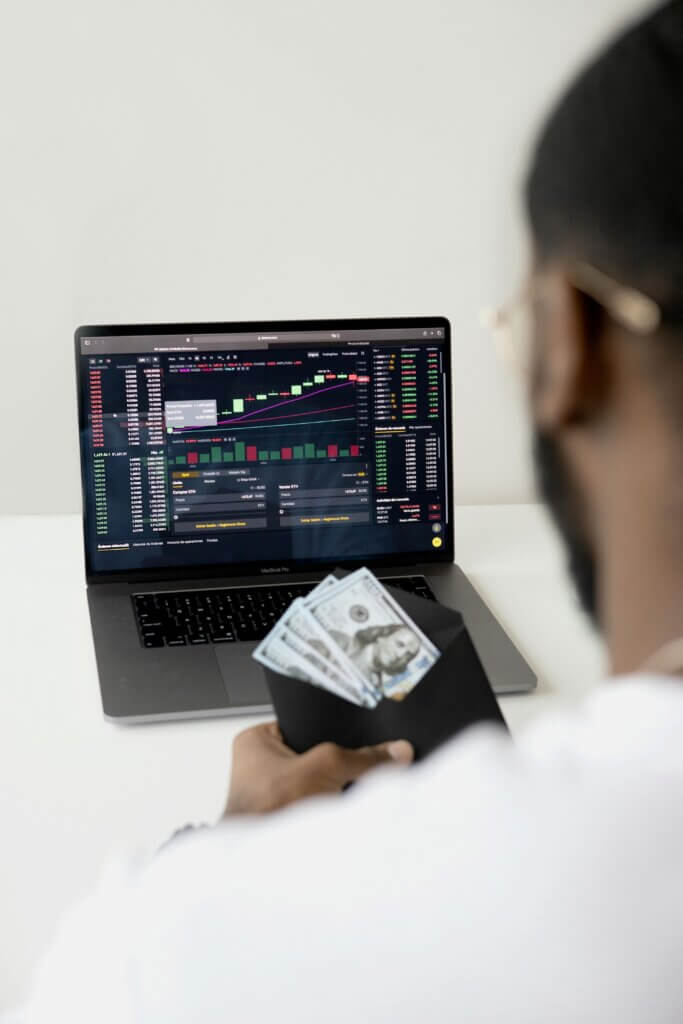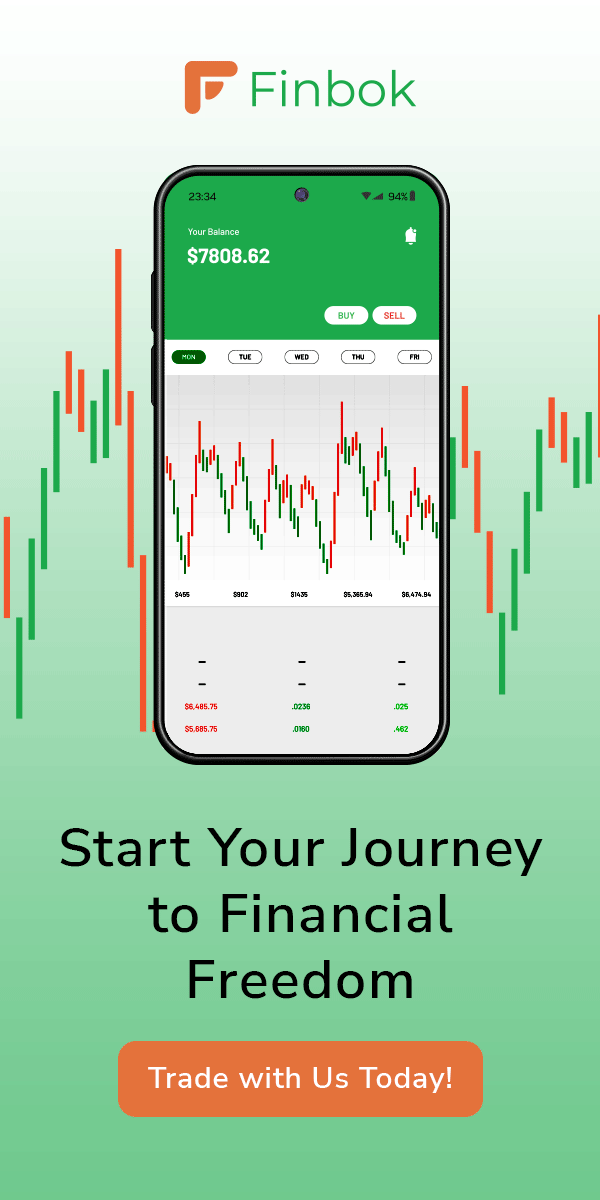Are you finding it difficult to trade the stock markets and financial assets in periods of high volatility?
With sudden price moves and huge gyrations, it can be hard to know how to trade. But trading in periods of high volatility need not be scary.
With the right strategies and a good understanding of how market dynamics will affect your trades, you can make use of these shifts.
High Volatility trading
In this article, we will examine how to trade in periods of high volatility using examples of oil, gold and Bitcoin to highlight how to play market spikes and market drops.

Step 1: Understand What High Volatility Means
When prices move sharply and quickly over a short period of time – say, within a day or two – we call that volatility. And we see it in a wide variety of assets, from stocks to commodities to cryptocurrencies.
Oil markets are one of the most volatile out there. When geopolitical tensions flare up or when supply shocks hit, that volatility can manifest.
That’s what we saw in early 2020, when oil prices briefly plunged below zero due to a sudden collapse in demand related to the COVID-19 pandemic – a scramble that left traders holding the bag.
Likewise, Bitcoin, the most recognised cryptocurrency, has had dramatic price volatility. In late 2021, Bitcoin fell more than 30% over the course of a few weeks from a new high. Knowing what the principal drivers are of this kind of high volatility can help you structure your trades.
Step 2: Choose the Right Assets for High Volatility
If you’re trading at high volatility, you want to put your money on assets that are familiar, and behave in expected ways when things get volatile.
Some assets, such as commodities and cryptocurrencies, tend to be volatile. Others, such as large-cap stocks, tend to be less affected. Let’s look at some examples.
– Oil: The oil market was a posterchild for volatility. Prices were sensitive to geopolitical events, production cuts or supply chain disruptions. In 2022, concerns over the Russia-Ukraine war driving global supply disruptions sent the price of oil to more than $120 per barrel. Traders who could read those signals profited from price swings and high volatility, but the potential for sudden reversals was also high.
– Gold: Gold is often seen as a ‘safe haven’ during times of high volatility in the financial markets. Even it can be volatile, though. In August 2020, gold prices soared to new highs above $2,000 per ounce on fears of economic disruption, before falling back sharply. This high volatility presents opportunities for traders who time their trades correctly.
– Bitcoin: Cryptocurrencies, particularly Bitcoin, have gained a reputation for extreme volatility. In November 2021, Bitcoin reached a high of nearly $69,000 before plunging by more than 50% within just a few months. For traders wanting to capitalise on high volatility, Bitcoin presents the opportunity for lucrative gains, but also carries a high level of risk.
Trading these assets, which tend to be quite volatile, requires a lot of knowledge about what drives their price, and how to mitigate risk.
Step 3: Use Technical Analysis to Navigate Volatility
Technical analysis is a vital tool for trading in a high-vol world. With charts and indicators, a trader can assess a trend, find key levels and pinpoint potential reversals. Technical analysis can help traders quantify opportunities to get in and out of trades during volatile times.
For example:
– Moving Averages: Moving averages can give you a smoothed out view of price action to find out whether the trend is up or down. If an asset such as oil is highly volatile, a moving average can filter out the noise to provide you with a longer-term view.
– Bollinger Bands: Bollinger Bands can help you identify an overbought or oversold condition. For example, if a gold price is trading at or near the edges of a gold Bollinger Band, then a price reversal could be on the horizon (ie, the price may be ready to head south), allowing you to go short or exit a gold trade.
– Relative Strength Index (RSI): The RSI tells us how much momentum an asset’s price is carrying. In a volatile asset, such as Bitcoin, the RSI can help traders spot when the asset is overbought (perhaps signalling a drop) or oversold (perhaps signalling a bounce).
These technical analysis tools can also enable traders to more effectively hedge their positions in volatile markets and minimise their exposure to sharp price movements.
Step 4: Manage Risk with Proper Strategies
Volatility equals risk, but you can manage that risk with the right strategies. Here are some approaches for protecting yourself in high volatility markets.
– Set Stop-Loss Orders: Setting a stop-loss order can protect against losses by selling an asset if it reaches a certain price. For example, in April 2020, oil prices fell from $20 per barrel to negative values. Traders who had set stop-losses were able to avoid the full extent of the sudden decline.
– Position Sizing: This is the (very important) role allocation has to play when dealing with volatile assets such as Bitcoin or gold. The core idea is to limit the size of each trade as a percentage of your portfolio. Suppose you have 1,000 units of capital, and you are about to buy Bitcoin. If you are a pessimist, and you expect Bitcoin to go down dramatically in the short term, you might want to limit your nominal risk in the trade to 2% of your total capital. This means that, no matter what happens to Bitcoin, your portfolio will be safe.
– Hedging: Hedging is taking the opposite position to reduce risk. For instance, if you go long on oil, then hedging could be buying a put option to protect yourself if the oil price suddenly tanks. Traders in Bitcoin could potentially use Bitcoin futures contracts, or options, to hedge away some of the potential price crash losses.
Adopting these strategies ensures that you are keeping your risk management in check while you trade high-volatility securities.
Step 5: Monitor Market Sentiment
The general atmosphere of market sentiment is a major driver of volatility. Indicators of sentiment, such as the VIX (the Volatility Index for stocks) give traders a feel for the prevailing level of fear or greed. During the COVID-19 pandemic, for example, the VIX spiked to historic levels as panic swept the markets, resulting in steep declines in stocks and commodities.
Similarly, in the markets for cryptocurrencies such as Bitcoin, sentiment in social media can be a critical factor in price movements. A tweet from prominent figures such as Elon Musk has been known to cause significant spikes or crashes in Bitcoin prices. Paying attention to sentiment signals and news reports can help traders anticipate price movements and make changes to their trading plans in advance.
Step 6: Capitalize on Sudden Market Reversals
One of the most difficult aspects of high-volatility trading is the risk of market reversals, such as the multiple short-term crashes and rapid recoveries that Bitcoin exhibited in 2021. Traders who anticipated these reversals could enter close to the coin’s bottom.
Or oil, which crashed in April 2020, only to stage a remarkable recovery in mid-2020 as the market sentiment and demand turned around. A skilled trader would have been able to capitalise on this opportunity.
Take advantage of these reversals by using technical tools, such as Fibonacci retracements, to find important levels where prices can reverse.
Step 7: Use Finbok’s Advanced Trading Tools for High Volatility
But in volatile markets, having the right tools in your trading arsenal is crucial. Finbok has a full suite of advanced trading tools to help you trade high volatility markets on margin. With real-time charts, technical indicators, and risk management tools including stop-loss and take-profit orders, Finbok’s platform is designed to help you trade in all market conditions with confidence. Finbok also provides market news updates and sentiment analysis, to help you get the latest insights on what’s moving the markets so you can stay ahead of the game when it comes to price swings.
For instance, Finbok’s real-time alerts can let you know if the price of a precious metal like gold or a digital currency like Bitcoin suddenly tanks – allowing you to exit trades at a profit or move to reduce your exposure to the market. Finbok lets you trade commodities, cryptocurrencies or stocks with better tools to monitor and react to market movements.
Step 8: Stay Disciplined and Stick to Your Plan
Volatility can also be stressful for traders as large price swings can lead to impulsive behaviour such as chasing losses or overtrading. For instance, many Bitcoin traders sold their positions in a panic in 2021 when BTC fell from its all-time high of more than $68000 in November to around $33000 early in January
Success comes down to discipline. Don’t make emotional decisions. Develop a trading plan and stick to it. Be clear on your goals for each trade, but also understand that short-term movements in the market are irrelevant to your long-term plan. When you stick to your plan and don’t let emotions get in the way, high volatility is easier to manage confidently.
Step 9: Practice with a Demo Account
It is a must-tool if you are new to trading high-volatility assets or if you have already some experience but want to adjust your strategies accordingly to high-volatility conditions in markets. The demo account provided by Finbok is a free tool with real market conditions, where you can practise trading without risking real money on volatile assets like oil, gold or Bitcoin. This will help you to build your own confidence before you start trading with real capital.
By practising on a demo account, you will be better prepared for the volatility of such trading and can tweak your strategy without financial risk.

Step 10: Be Prepared for Sharp Corrections
High levels of volatility create the conditions for market corrections, where prices undergo sharp reversals. After Bitcoin hit an all-time high in November 2021, its price dropped more than 50% within days. Oil prices have also undergone sharp corrections because of geopolitical developments or shifts in global supply.
You can prepare yourself for these corrections by setting trailing stops to prevent profit loss when markets move against you, as well as being aware of news events or announcements that could result in a sudden reversal.
Without a clear understanding of market dynamics, with risk-management tools, and with the right set of technical tools, you will be trading volatility blindly. Having a clear understanding of market dynamics, with risk-management tools and with the right set of technical tools, will allow you to capitalise on volatility.
By focusing on volatile markets such as oil, gold and Bitcoin, by using technical analysis, and being disciplined, you can navigate the wild markets and protect your investment while capitalising on the movements of volatile markets.
You can find out more about the advanced trading tools and resources from Finbok here.
Finbok is designed for experienced and novice investment traders, helping you to manage difficult market conditions.







